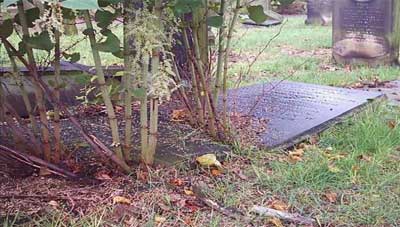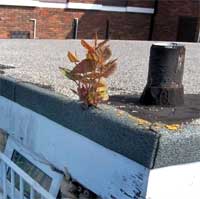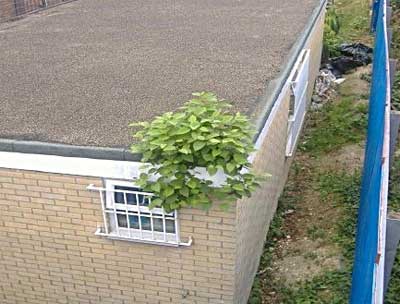Knotweed: is Stefan papering over the cracks?
- Complaining about the Mainland - 17th August, 2024
- New island designation – is it just greenwash? - 26th April, 2024
- Police and Crime Commissioners – a solution or a problem? - 21st April, 2024
Everyone seems to know a few facts about Japanese knotweed Fallopia japonica: it’s going to be eaten by some Japanese bug, any minute now; it’s really nasty and destroys your house; and anyway, it’s illegal, right?

Well, like many half-known truths there’s something in all of these assertions. It’s not an offence to have knotweed on your land – although it is to plant or sell it. And the psyllid that has been released in the UK as a biological control agent may or may not eat it all up, but for most of us that won’t happen for many years, if it does at all. But does knotweed actually damage buildings? Now this strongly-held belief about knotweed is being challenged by eminent horticulturist and broadcaster Dr Stefan Buczacki. Reported in Gardening Week Dr Buczacki says:
My instinct is that it’s an overreaction. I have never seen an example of Japanese knotweed damaging a building’s foundations. It’s undeniably a persistent, spreading weed, it’s the 21st century triffid. But the real threat of Japanese knotweed is the threat it poses to surrounding plants.
If Stefan is right – and he usually is – then is the multi-million pound knotweed-eradication industry just stringing the rest of us along?

This got me thinking. Plenty of times knotweed can be seen taking advantage of what could be already-damaged structures. But what Dr Buczacki said was specific to foundations, and actually, I’ve never actually seen knotweed actually damaging the foundations of a building, either. It would probably be quite hard to see anyway. But does that mean it never does? I asked the question on Twitter, and on the UKTC forum, and got some interesting answers. Arboriculturalist Neil described a remarkable scenario:
A lady had returned from holiday to find knotweed growing up inside her living room. I saw this for myself, 3 or 4 feet-high stems emerging from between the wall and the skirting board – which it had prised off the wall. The knotweed had established about 3m away on waste ground at the side of the end terraced house. It had travelled under the fence, under a concrete path and under the gable-end wall to surface in the house. The floor of the room was solid with a bitumen topping – this had lifted all over like roots under tarmac – the shoots had not broken the surface but could only emerge at the join between the wall and floor!
Now that sounds, to me, like damage to foundations. Hard to prove beyond doubt though. So here are some pictures which seem even more compelling: this time from knotweed control company IVM Ltd who responded to my Twitter query.

This one shows knotweed growing out of a cracked memorial. Again, hard to say that the knotweed caused the damage – but it certainly is making it worse.

Here’s a remarkable picture of knotweed growing out of the roof of a building…

And this is the same site a little while later! IVM say “It can and will grow through anything foundations, cars, graves” The knotweed growing out of the building is quite alarming – what’s going on inside? As knotweed doesn’t spread by seed (not in the UK, anyway) it seems likely that this knotweed has come up from ground-level to come out there. I wouldn’t hold out much hope for the building if this particular colony is left untreated. Even if the foundations are untouched the rest of it probably won’t last too long. So Dr Buczacki might not, strictly, be wrong. Knotweed might not attack the foundations of otherwise healthy structures, although if it did it would be pretty hard to see happening. But what seems certain is that if the slightest flaw in the structure exists, knotweed has a tendency to exploit and exacerbate it, leading to far worse damage in pretty short order. How many of us can say our buildings, walls, fences and surfaces are utterly free from defect? Very few I suspect. So thanks, Stefan, but I shall be keeping the glyphosate on standby just the same.
